London Fashion Week S/S 2025 highlights: JW Anderson to Burberry
Wallpaper* fashion features editor Jack Moss selects the best of London Fashion Week S/S 2025, from JW Anderson’s ‘reduced library of materials’ to Burberry’s easy elegance
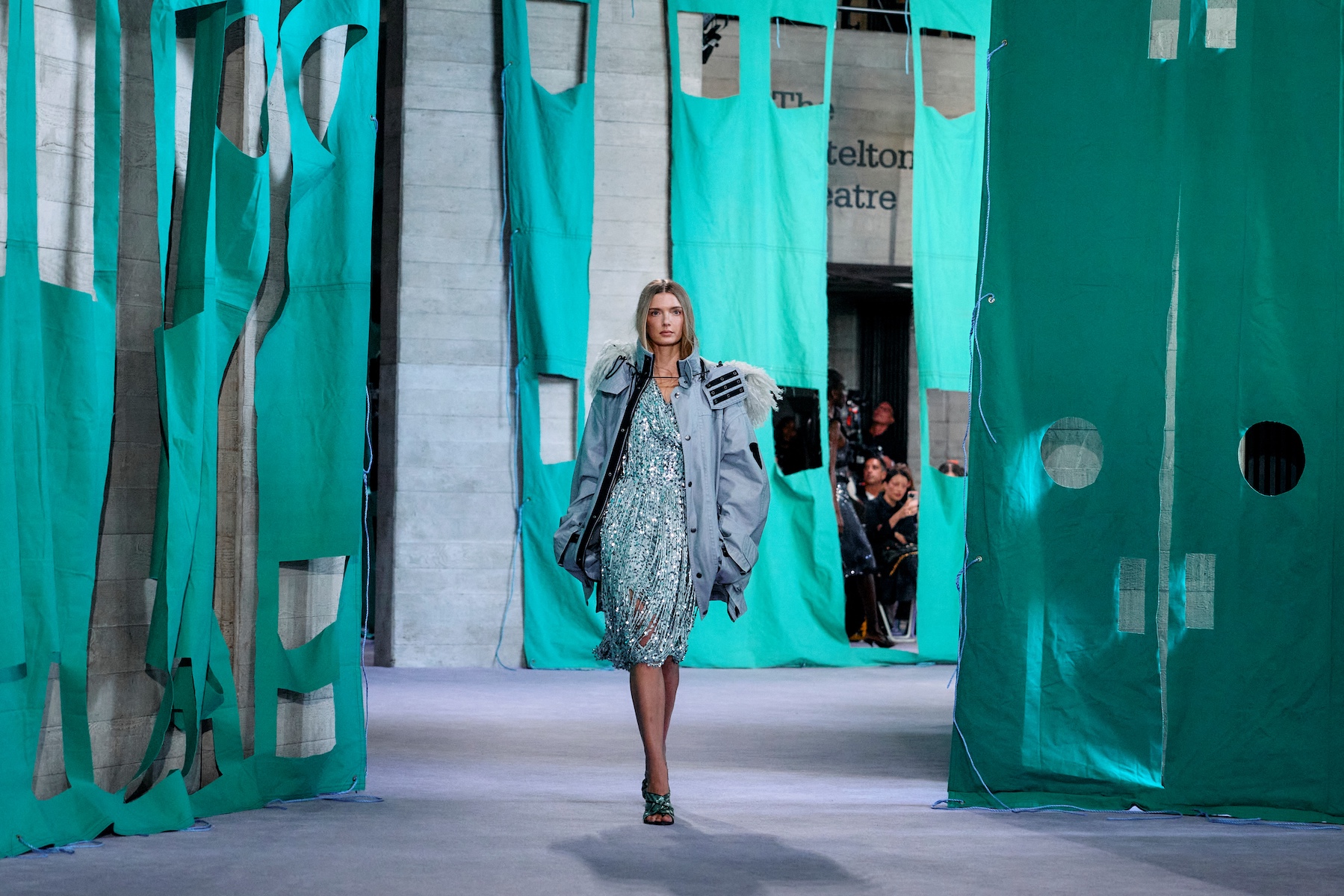
While there remains much chatter about the difficulties of founding – and indeed maintaining – a young label in London, this season’s expansive schedule, with shows running from early morning until late into the evening, was proof that London Fashion Week remains buoyant four decades on, even if a few familiar names were missing from the line-up (this year marks the week’s 40th anniversary).
When it comes to young talent, there was plenty in the mix: the Harry Styles-invested label S.S. Daley showed its first dedicated womenswear collection, on Friday afternoon; LVMH Prize winner Nensi Dojaka returned to the schedule and debuted a collaboration with American behemoth Calvin Klein; while Michael Stewart’s Standing Ground held its first solo show after graduating Fashion East. More new-generation talent came from Chopova Lowena, Paolo Carzana and Aaron Esh, the latter working with stylist Katy England – a close collaborator with Lee Alexander McQueen – for the first time.
Elsewhere, eyes were on the week’s two biggest draws – JW Anderson and Burberry, on Sunday and Monday respectively. The latter took place at Southbank’s National Theatre, including a set created for the occasion by the British artist Gary Hume. Meanwhile, stalwarts of the week Simone Rocha, Roksanda and Erdem rounded out the schedule.
Here, Wallpaper* fashion features editor Jack Moss picks the very best of London Fashion Week S/S 2025.
The best of London Fashion Week S/S 2025
Burberry
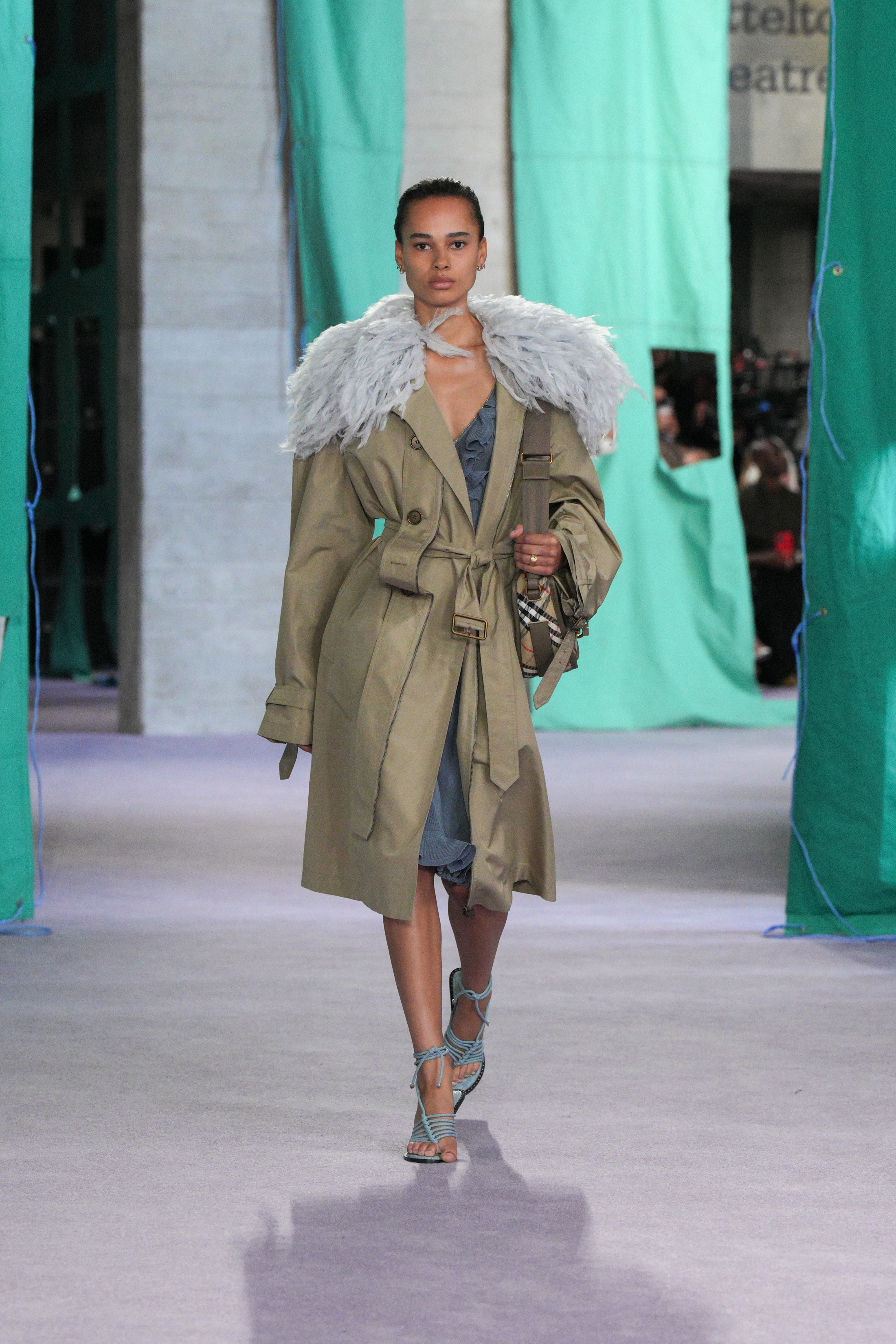
This season, Daniel Lee selected the Brutalist lobby of London’s National Theatre to show his latest collection for Burberry. As the artist Gary Hume – who created the runway set – told Wallpaper*, part of this was down to logistics (there weren’t many spaces high enough to hang his enormous medical-green tarpaulins). But the concrete space was also meant to echo the industrial warehouse in London’s Docklands where Hume first displayed ‘Bays’ in 1990, the work which inspired the display, then made from the lorry tarpaulins. ‘I hadn’t touched the pieces in a long time, and so when Daniel asked me if I could participate in his show, I said yes,’ said Hume.
On Lee’s part, he said that he wanted the collection to echo the ‘lightness’ of Hume’s works, capturing what he deemed an ‘easy elegance’ in 2000s-tinged pieces which spanned cargo pants, coated capes, sun-bleached outerwear and sequinned dresses, all in a ‘cheerful’ palette of lilac, green and terracotta. The Burberry check appeared once again (after the show Lee called it a ‘precious’ commodity), adorning everything from belts and bag straps to shoes (a particularly strong point this season), while outerwear – a Burberry staple – was strong. Trenches came with fluffy collars, as did parkas, which had a slouchy appeal. Together, it was Lee’s best collection yet for the house – a convincing proposition for London cool
Simone Rocha
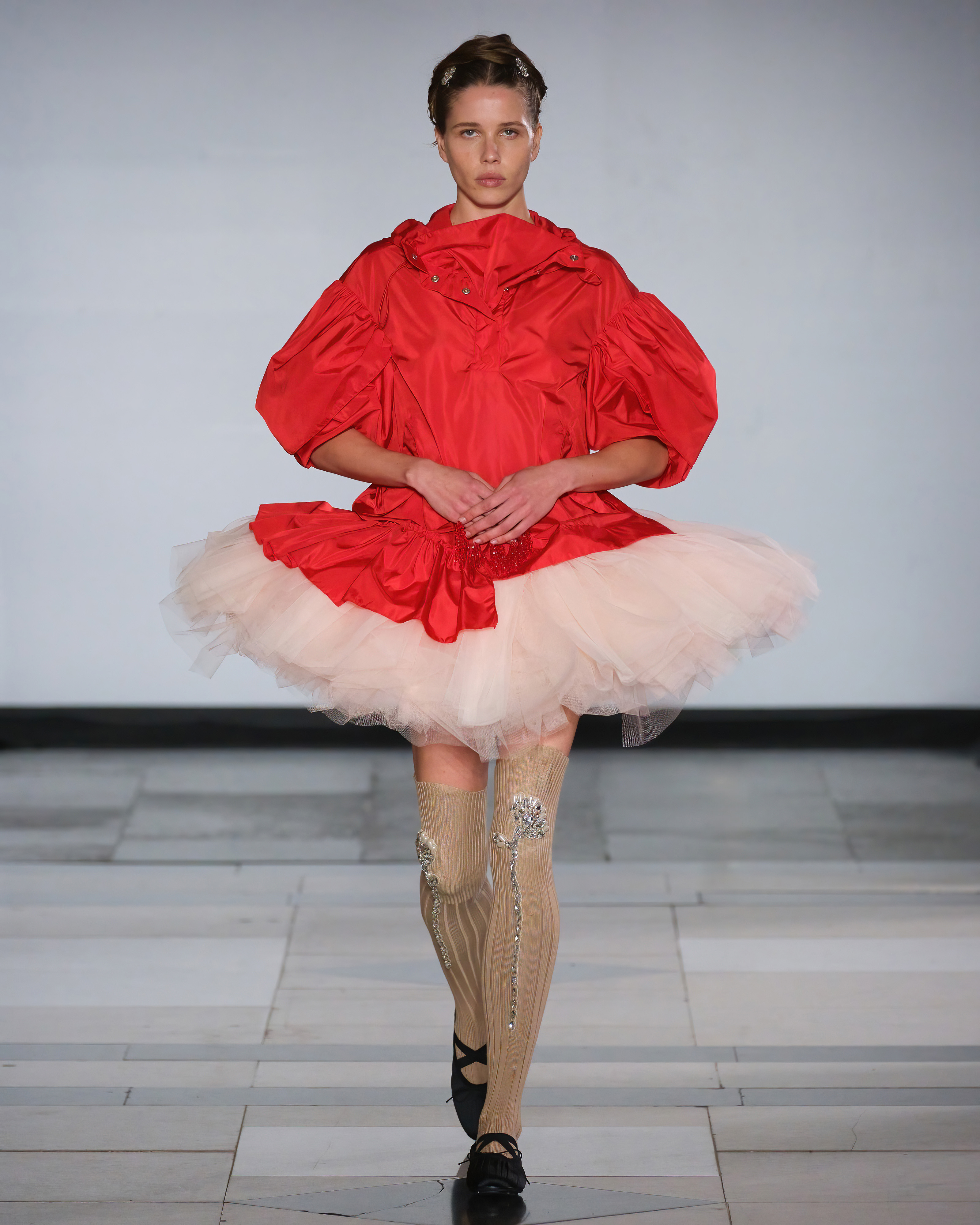
Simone Rocha returned to the domed central hall of London’s main criminal court, The Old Bailey, for her latest collection, which mused on theatre, ballet and performance – from the moment of rehearsal to stepping out on stage. Amid the grand Edward Mountford-designed marble and muralled interiors, Rocha proposed a collection of romantic and undone glamour, which played on her hallmarks (namely the interplay of dark and light, the sweet and the subversive). So there were grand satin bows and carnations set into sheer fabric, as if preserved; tutu-like tulle skirts and dripping crystals; flashes of crimson red and ballerina pink. On the feet, Rocha’s version of a ballet pump, and a third bejewelled collaboration with Crocs. ‘The moments between perfection and progress - leading up to the performance,’ described the collection notes, while the soundtrack ended with Judi Dench’s mournful version of ‘Send in the Clowns’ from Stephen Sondheim’s 'A Little Night Music'. It made for the type of apparition Rocha is now so adept at conjuring – transporting, otherworldly, and always brimming with feeling.
Wallpaper* Newsletter
Receive our daily digest of inspiration, escapism and design stories from around the world direct to your inbox.
16Arlington
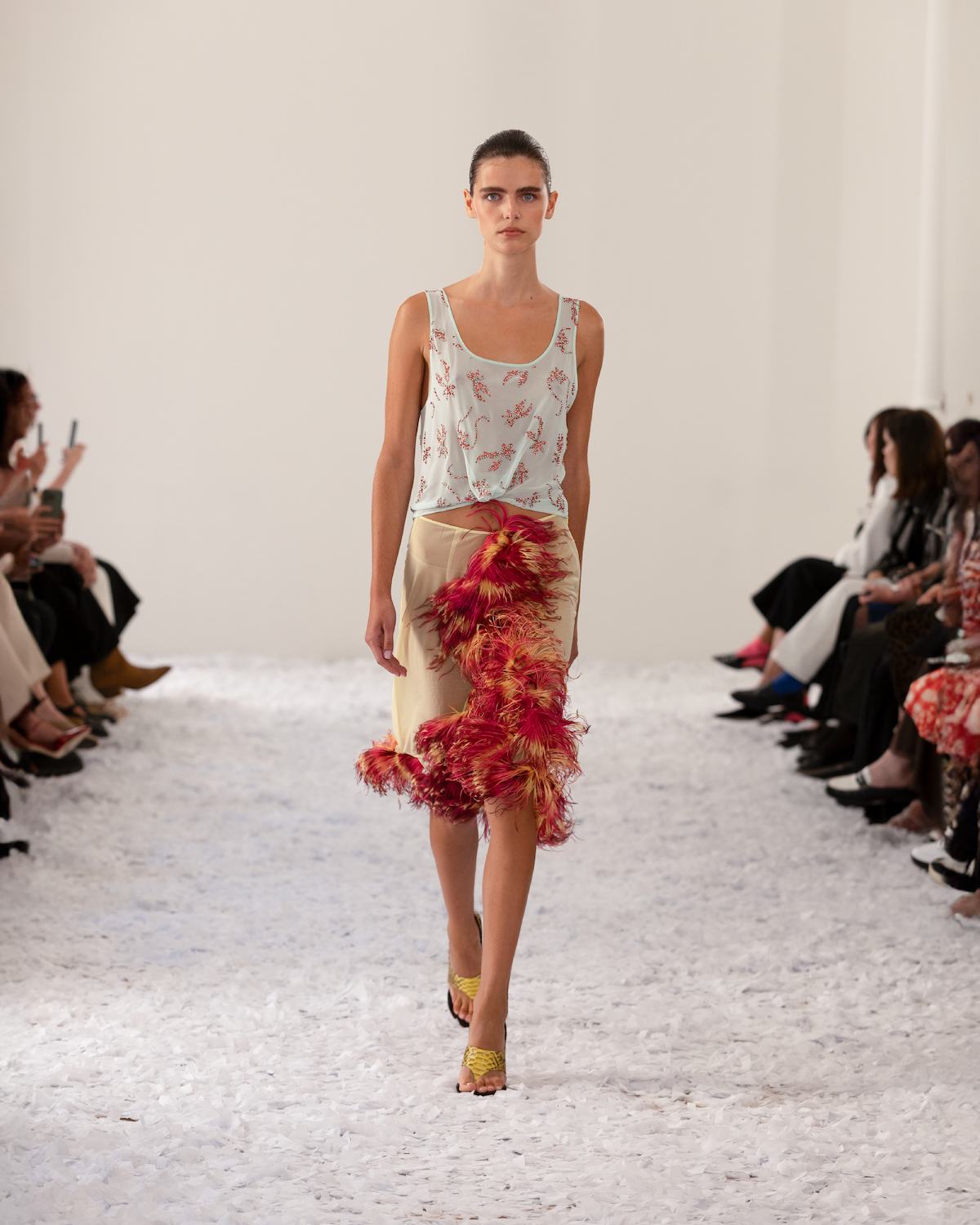
16Arlington creative director Marco Capaldi said that he was in a good mood this season, seeking to return to the ‘fun, sexy spirit’ of the buzzy London-based label after the darker mood of recent collections (for A/W 2024, he brought up memories of childhood monsters and ghouls). He likened the collection to stepping out into the sun, a feeling replicated by the glowing showspace, which had been entirely covered in white confetti by the London-based production agency Studio Boum. It suggested a celebratory mood, one reflected in a collection which was rooted in seductive, warm-weather escapes and getting lost on the dancefloor. In tones inspired by the sun at dawn and dusk – yellow, deep orange, hot pink – Capaldi proposed languid silhouettes which referenced swimwear and sarongs though were adorned with flourishes of colourful feathers or glimmering floral motifs. It made for an uplifting summertime offering from the growing label, one which will no doubt please its already numerous devotees.
Roksanda
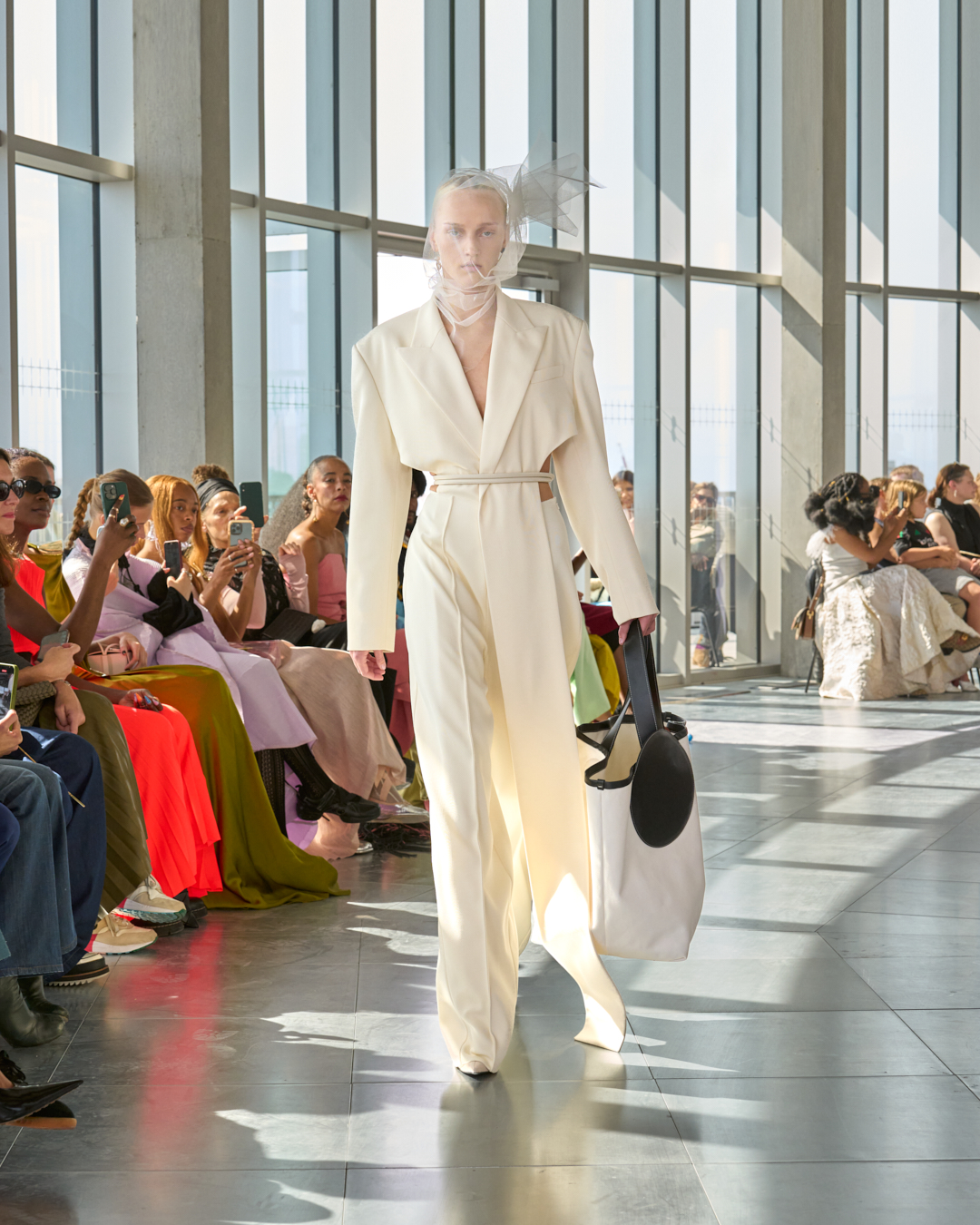
It was another dramatic location for Roksanda Ilinčić’s latest collection: the top floor of Space House in London’s Holborn, a circular space which affords 360-degree views of London through its floor-to-ceiling windows. While some designers would have a hard time creating a collection which stands up to such a backdrop, Ilinčić’s impactful silhouettes – this season crested with elegant scrunches of lace around the models’ heads – more than drew the eye away from the sunlit views beyond. This season, the Serbian designer had been looking towards the work of Agnes Denes, a Hungarian conceptual artist perhaps best known for ‘Wheatfield – A Confrontation’, whereby the artist planted two acres of wheat in a Battery Park landfill in Manhattan in 1982. The juxtaposition between the natural and the urban – then still epitomised by Minoru Yamasaki’s monolithic World Trade Centre, which backdropped the piece – inspired a collection which moved between ‘structure and fluidity’, whereby strict tailoring and outerwear (sliced away at the back) met dramatic ruffles and adornments of raffia. It was a collection which also marks a new chapter for Roksanda the label, which was purchased in May by entrepreneur Damian Hopkins’ The Brand Group, allowing Ilinčić to retain full creative control.
JW Anderson
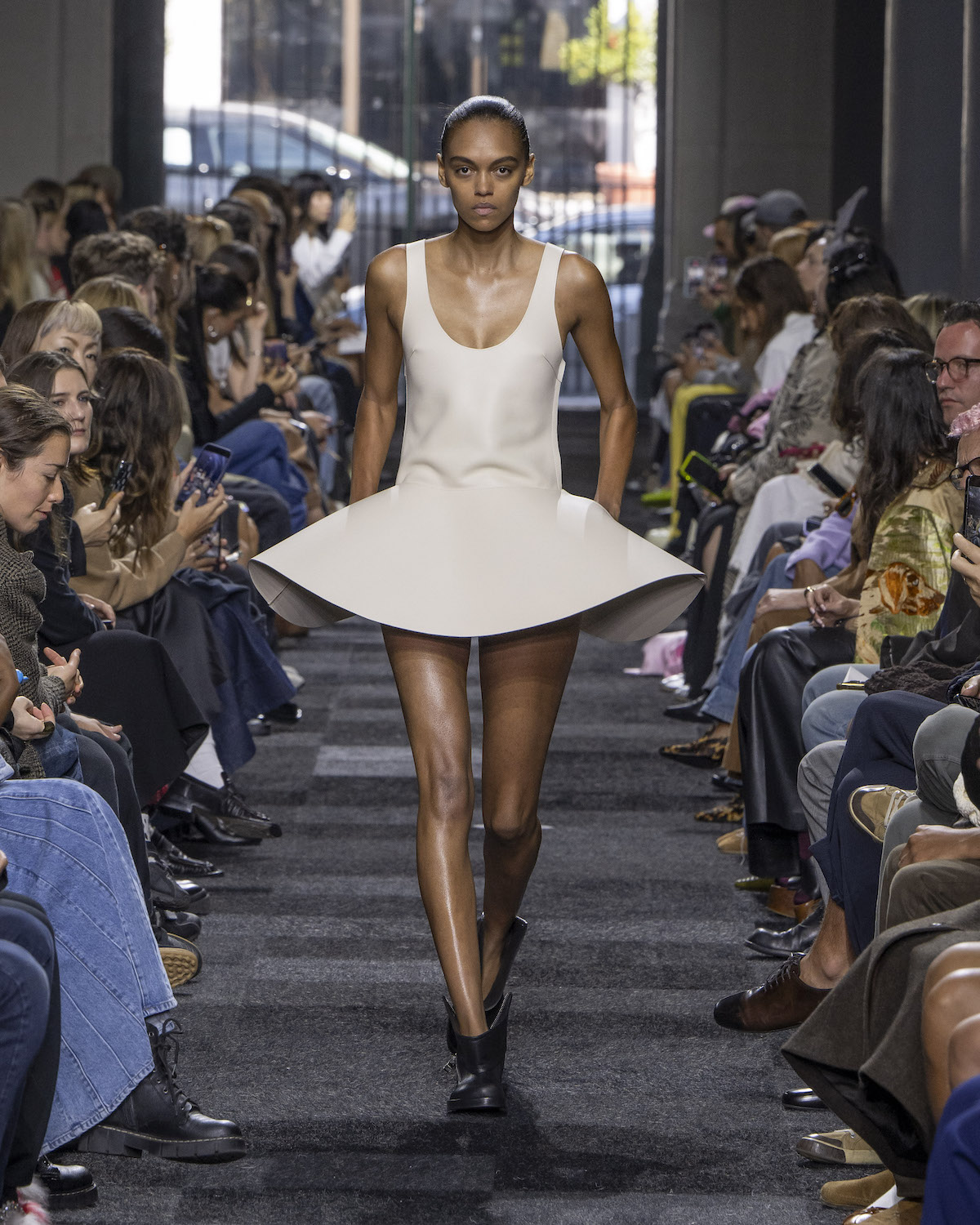
Jonathan Anderson said that there was a ‘strictness’ to this season’s JW Anderson collection, created using a ‘reduced library of materials’ – namely silk satin, cashmere yarn, ‘one type of leather’, as well as ‘one type of embroidery’, sequins, and lace (the latter was ‘the only decoration’). It made for a sharply defined collection from the designer, who used the materials to explore the idea of ‘modern prettiness’, albeit in his usual idiosyncratic style. Mini dresses, for example, came with trompe l’oeil prints of hoodies and sweatshirts, while jutting flared skirts in leather or silk-satin made for the collection’s defining silhouette. Elsewhere knitwear – something that Anderson has been playing with in recent collections for his eponymous label – appeared in blown-up weaves, or as chunky argyle-style dresses. ‘There needs to be a narrowing of things,’ the designer said post-show of the streamlined collection, noting that he was trying to look forward and intuit ‘where the next decade is going’. The collection also featured prints of text from a review by British critic Clive Bell, part of the Bloomsbury Group, which Anderson explained explores ‘the idea of art and design and how they sit together.’ Though for him, it wasn’t so much about what the essay argues. ‘It’s more about the idea of taking a blank page and starting afresh. Type on a white sheet of paper is such a graphic thing. It’s more about the modernity of text on a white page.’
Standing Ground
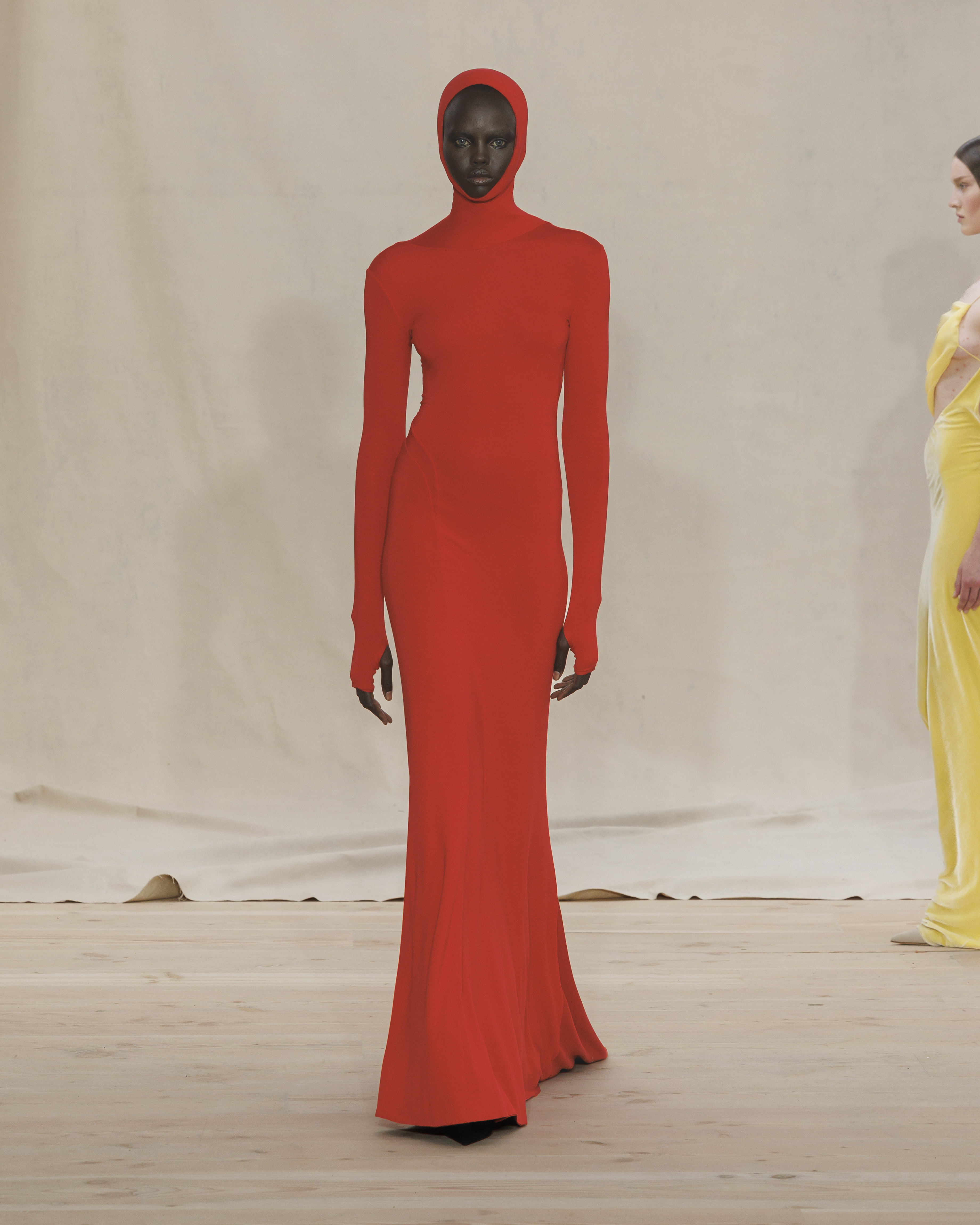
Standing Ground’s Michael Stewart has a singular aesthetic which has made him one of London’s brightest young talents, despite not always fitting the mould of the city’s style scene. For a start, his studio operates more akin to a couture atelier (for now, his clothing can only be purchased custom), while his evolution of a single look – an elongated, column-like silhouette, which mines the elemental forms of standing stones found in his native Ireland – eschews the ephemeral and the headline-grabbing. This season marked his first show since departing the Fashion East talent incubator a year ago, and came just a week or so since he won the Savoir Faire award at this year’s LVMH Prize (which also comes with an injection of cash for the label). That dedication to craft was in full display here, in particular the almost alien-like protrusions which lie embedded in the fabric which Stewart has been honing season on season, here also emerging on a dramatic leather overcoat. Other dresses in the collection veered between the sculptural and the draped, and will no doubt be adopted by the roster of talent – including the actress Salma Hayek – who have worn his clothes on the red carpet. As the models walked out, procession-like, in the otherworldly collection, it demonstrated a clarity of vision that a rare few designers possess.
Nensi Dojaka
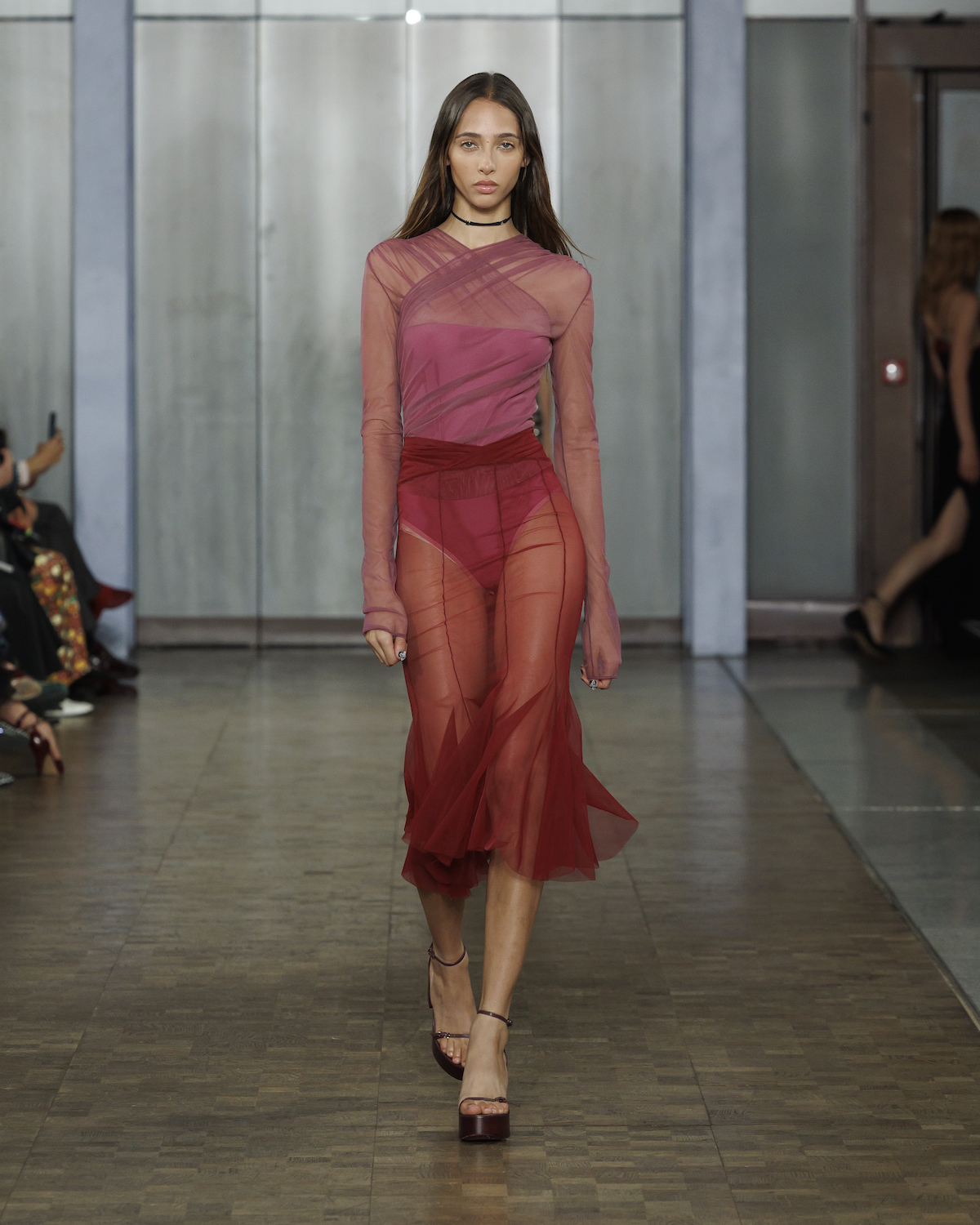
There was certainly a buzz around the Nensi Dojaka show, which marked the former LVMH Prize winner’s return to the runway after a hiatus of over a year – an increasingly popular move among young designers keen to set their own schedule, and something the Albania-born designer did not want to dwell on too much afterwards (though an emotional final bow showed the undeniable weight of the moment). Indeed the show, held at the St Pancras Renaissance Hotel, began where she left off, seeing Dojaka continue to hone a singular aesthetic which centres on intricate lingerie and hosiery-inspired silhouettes with delicate criss-crossing straps, floral motifs, and ruffles. But there was also a buzz because the show also revealed an underwear collaboration with Calvin Klein, which was announced last week and appeared as a collection-within-a-collection mid-way through. It was a clever move by the American behemoth, which looks to be placing itself back into the fashion sphere once again with the appointment of Veronica Leoni (formerly of Jil Sander, Céline and The Row) to reinvigorate Calvin Klein Collection with a runway show for A/W 2025 (the first runway show since the departure of Raf Simons in 2018). The pieces, which spanned bra tops, slip dresses and body suits captured Dojaka’s distinctly sensual style, albeit with the minimalist inflection associated with Calvin Klein. Not only will this see designer’s work brought to a wider audience, but it also signalled how Nensi Dojaka the label can itself evolve as it enters its new era.
Aaron Esh
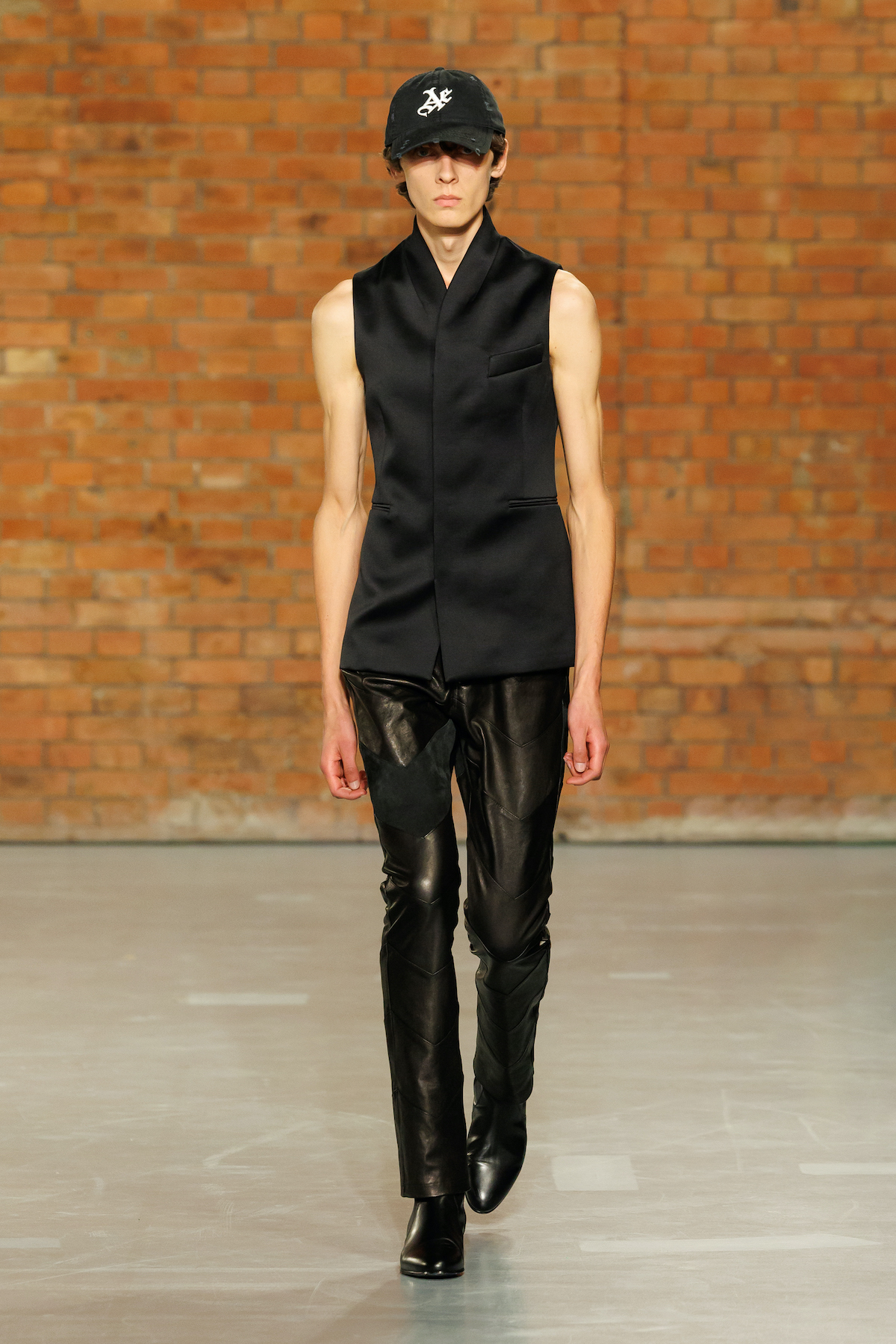
Central Saint Martins graduate Aaron Esh worked with Katy England this season, a stylist who rose to prominence in the 1990s working with Alexander McQueen. England brought her expertise of the era’s insouciant, rock and roll style codes to a singular collection from Esh which captured an undeniably seductive mood. Worn with the signature Aaron Esh cap and requisite dark sunglasses, the collection veered from narrow leather trousers and jackets to bias-cut slip dresses and diaphanous silk shirting. Meanwhile blazers – sculpted and tuxedo-style, or sliced away at the sleeve – showed Esh’s prowess in tailoring, which runs in the London-born designer’s blood (his grandfather was a tailor, and his aunt ran an East End clothing factory). Esh said he wanted to capture the lives of his friends and creative community, of ‘London and its unparalleled attitude… of growing up, dreaming big, and making something out of nothing.’ It was a collection that did just that: as much as clothes, the Aaron Esh world is all about a mood.
Kent & Curwen
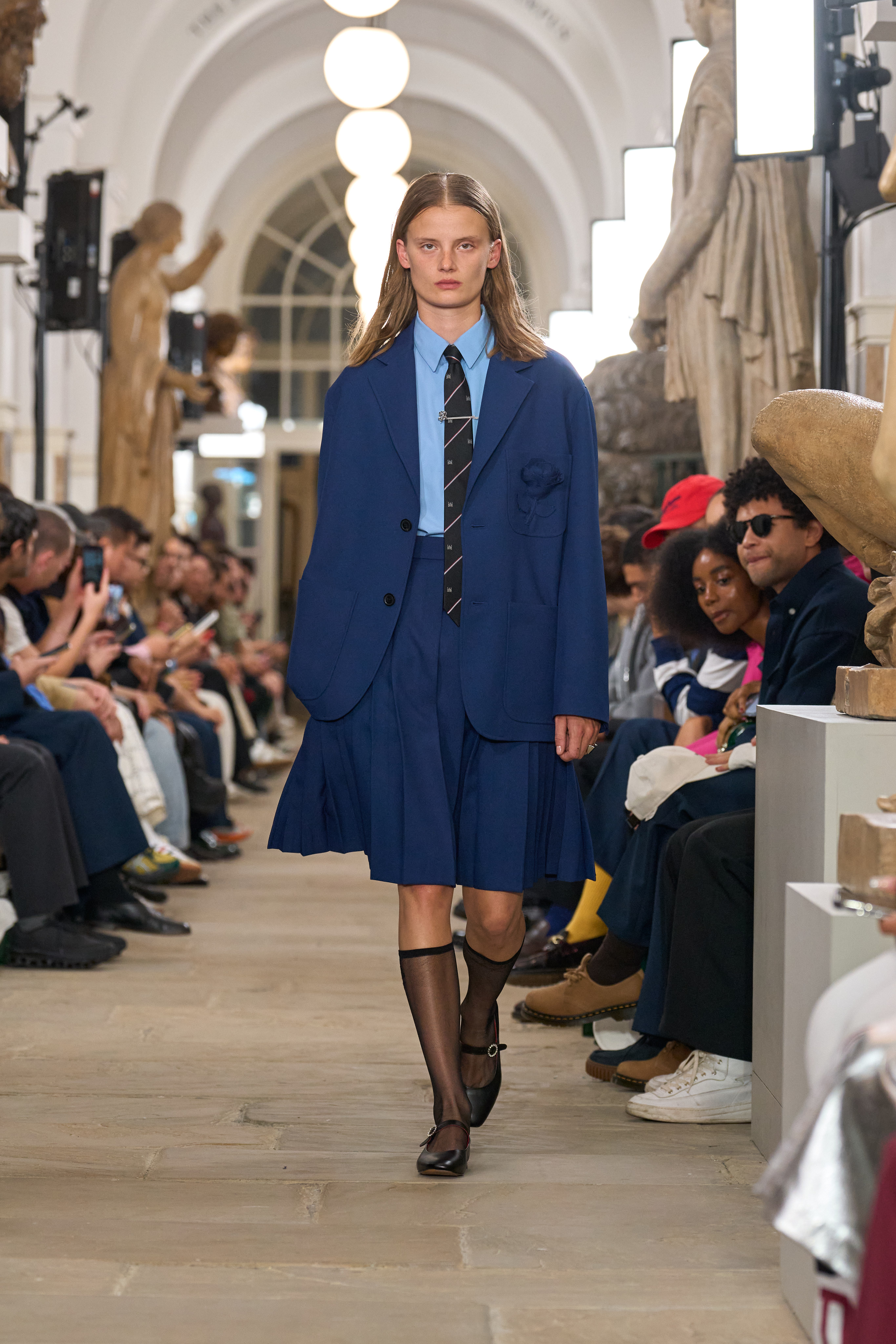
Kent & Curwen was founded in 1926 to outfit students at Eton and has gone through various iterations in the near-century since, including a five-year partnership with David Beckham which began in 2015 and saw the brand show at London Fashion Week (it went out of business in 2020). On a sunny afternoon at London’s Royal Academy of Art, Kent & Curwen saw its latest rebirth, thanks to new ownership by the Chinese golf wear conglomerate Biem.L.Fdlkk Garment. Daniel Kearns, who was initially at the brand in 2016, returns as the brand’s chief creative officer, hoping to own the ‘preppy’ look in the UK as the style proliferates on social media and brands like Polo Ralph Lauren, Tommy Hilfiger and Lacoste find new success overseas. It’s something Kent & Curwen has plenty of pedigree, having ‘invented’ the cricket sweater, and has a rich archive of rugby sweaters, striped neckties and school blazers, something that Kearns mined in his redux of the label. Here was a colourful and youthful riff on the public school uniform, titled ‘School’, seeing blazers adorned with 3D-appliqué flowers (florals were a motif throughout), mule-loafers with colourful furry insoles, and sheer coloured pop socks, alongside book bags and berets. If occasionally it veered towards the silly (a dress made entirely of the brand’s signature club ties), it was at its strongest when it riffed on the classics, like a cape-neck trench coat worn with a baby blue sweater and the short shorts du jour.
Chopova Lowena
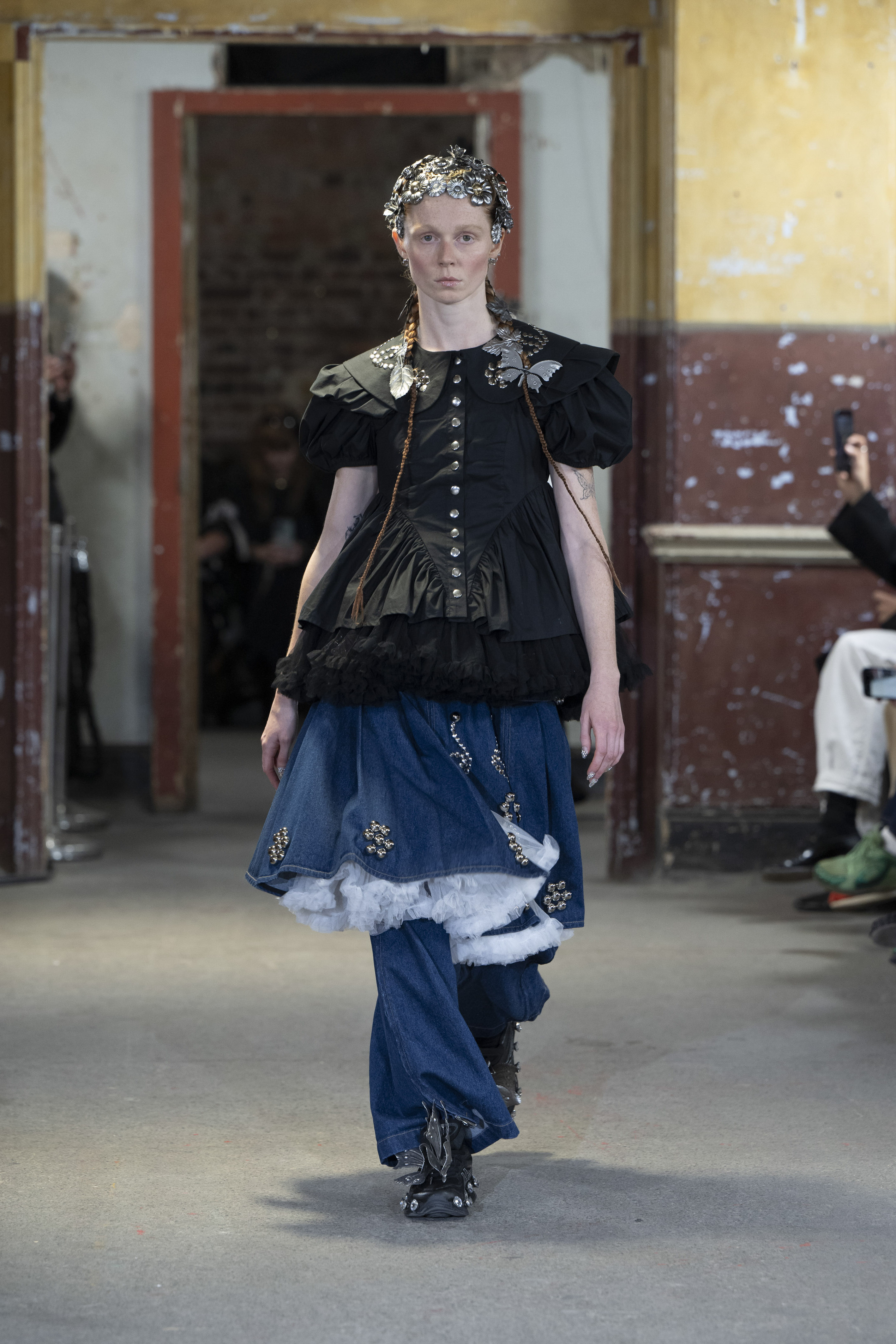
A fun and riotous collection from Emma Chopova and Laura Lowena saw the designers transport their distinct aesthetic – carabiner kilts, cartoon T-shirts, a pile-up of embellishment – to the American West, referencing the freewheeling femininity of Calamity Jane, showgirls and rodeo queens (in their parlance, a ‘walloping womanity’). Staged in typically stomping style in the concrete basement of Shoreditch Town Hall on an eclectic cast (always a strong point for the designers, who pool from their creative circle), it proved fertile ground for a liberated collection which was rich in detail. Symbols of open-road toughness – biker-like medallions, studs and cowboy denim – met a delirious femininity in billowing ruffles, bloomers and glimmering bodysuits, the latter a nod to gymnasts Simone Biles and Stiliana Nikolova. The pair said they were thinking about the idea of costumes, the way that women have to dress up to face the world, ‘reinventing herself every day in her wardrobe’. The accompanying notes ended with a kind of manifesto, in part aimed at Lowena’s young twin daughters, born earlier this year. ‘Spill your guts… wear your heart on your sleeve… gather your friends and grow up together, with rebellion and bombast and dare.’ This was a collection which allowed for just that.
Derrick
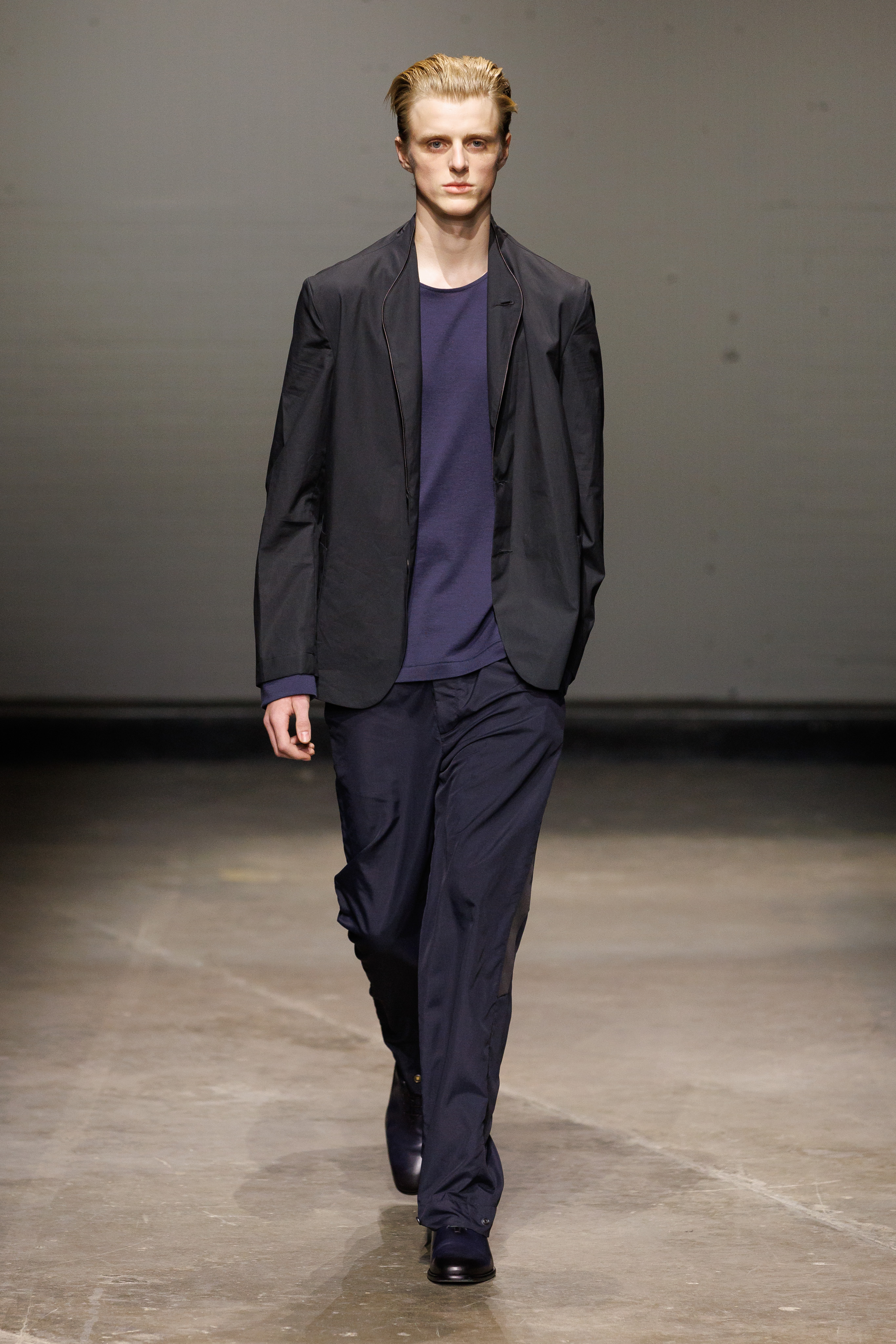
There is something compelling about the relative subtlety of Luke Derrick, an outlier on a London schedule which tends to favour the bombastic and the outré in its young designers. A graduate of London’s Central Saint Martins who went on to work at houses like Brioni, Dunhill and Alexander McQueen, his parlance is tailoring, twisting the traditional medium in intriguing ways, whether through the gentle shift of a collar placement or the choice of fabric, which are often ultra-lightweight and drawn from sportswear (here, he used Japanese nylons). This season – the designer’s sophomore runway show on the fashion week schedule – was titled ‘Raincheck’, seeing Derrick imagine his protagonist for the season having let summer pass him by: ‘newly bought shirts meant for warmer climes, now without purpose… still in London, still caught in the August rain.’ One senses that the true details of these clothes will reveal themselves on closer inspection (Derrick noted that he wanted the surfaces of the fabric to glisten as if misted with dew), though the immediate effect was one of wistfulness – a moment of contemplation amid the fashion week noise.
Fashion East
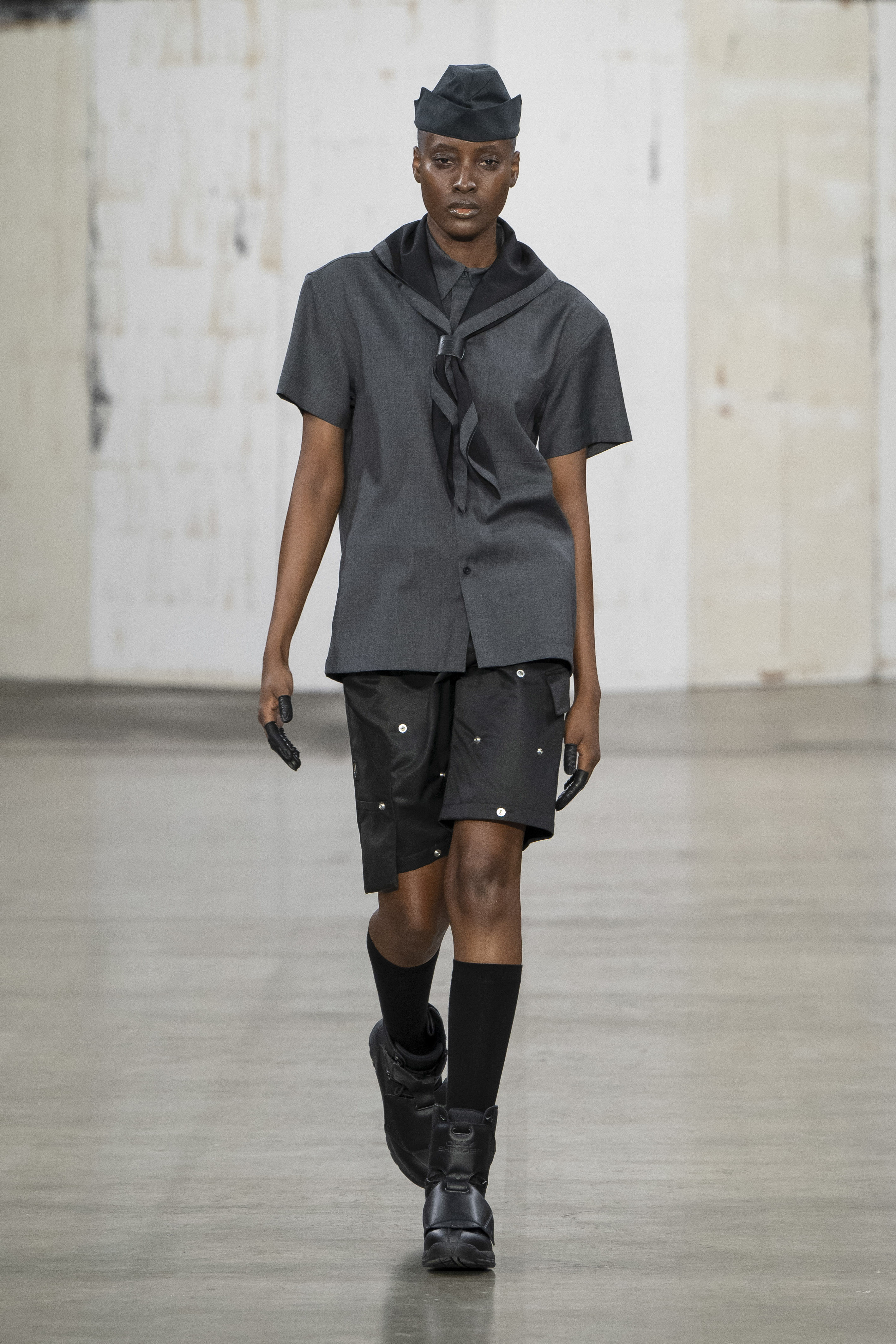
Olly Shinder
Fashion East has more than earned its stripes as an incubator of London’s fashion talent (the roster of names which have passed through the Lulu Kennedy-led scheme include Kim Jones, Jonathan Anderson and Grace Wales Bonner). Of the five fledgling labels showing this season, only one, Olly Shinder, had shown with Fashion East previously. His experience showed with a cohesive collection which continued to explore how ‘unspectacular things [can] become objects of urgent desire’ – notably, uniforms and workwear. This season, he titled the collection ‘Summer Camp’, putting his clubwear-inspired spin on PE kits, Scout uniforms and wading gear, reimagined in rubber and nylon. Intricate pattern-cutting, meanwhile, led to cage-like constructions which exposed the skin beneath – a process Shinder says is ‘obsessive’. It had a heady, fetishistic air, an evolution of what Shinder describes as the ‘study and subversion of hypermasculine dress codes’.
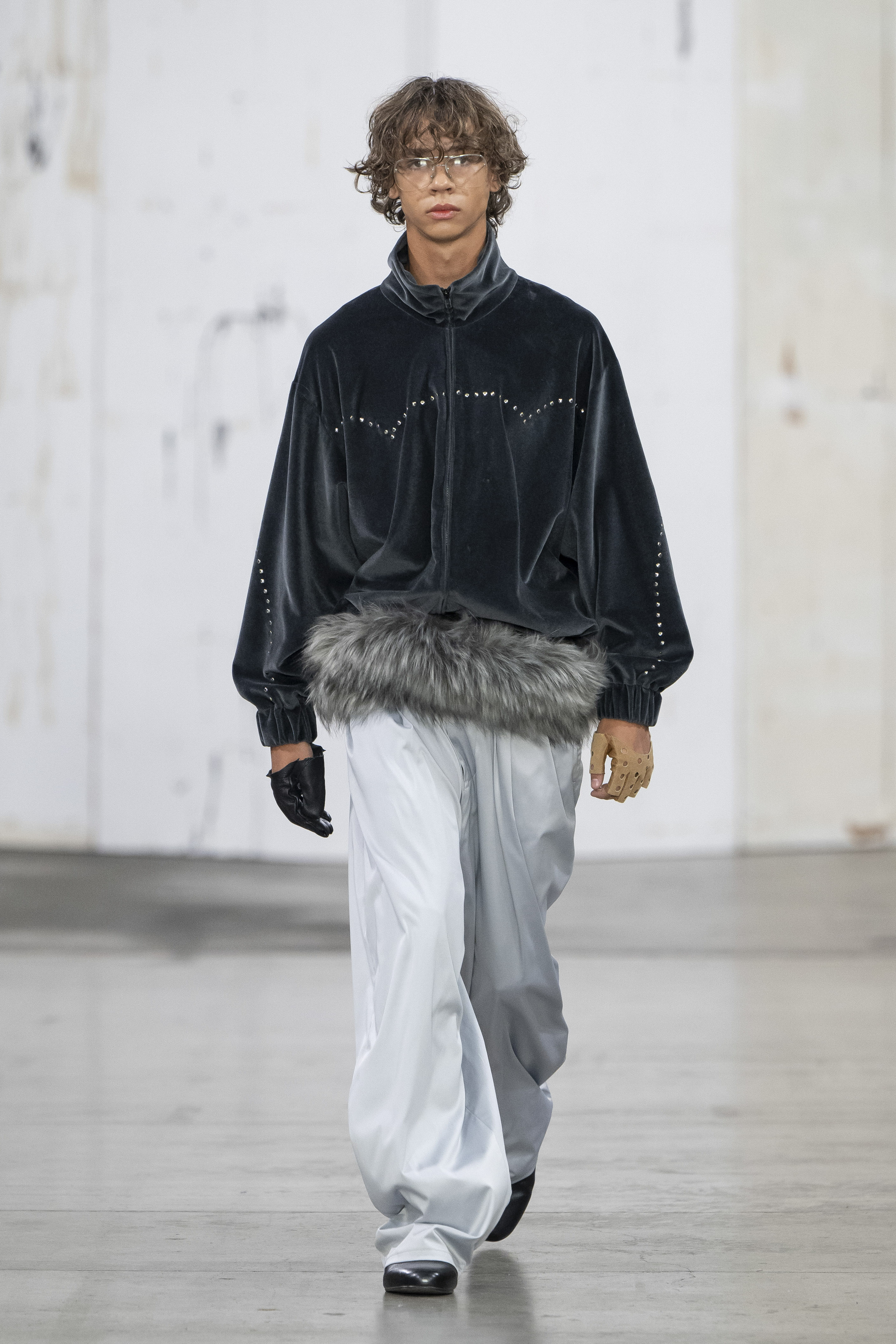
Loutre
If Shinder’s clothing is not for the faint of heart, Loutre – the London-based label of former industrial and product designer Pia Schiele – provided a real-world alternative. There was a particular charm to her pieces, which combined louche silhouettes (fluid satin trousers, warped shirting, thick wrapped cummerbunds) with flourishes of embellishment and surface interest, from dots of studs to strips of faux fur. Schiele said she imagined the ‘thrill of running through the city with messy hair and unfinished make-up’, and there was a pleasurable imperfection to the collection’s raw-cut hems and pieced-together styling. Finishing the runway lineup (the other two labels, Positive Energy Flows Again by Kitty Shukman and SOS SKYN held presentations prior to the main show) was Cameron Williams and Jebi Labemika’s Nuba, which draws on the ‘geographies of London, Jamaica and Cameroon’, their respective heritages. Sinuous, twisting silhouettes and low-slung trousers, in which models stuffed their hands, were a metaphor, said the designers, for the sometimes uncomfortable attempts to fit into the pervasive culture, ‘the emotional anguish caused by the need to simulate differing versions of ourselves between alternate realities’. It was an intriguing start.
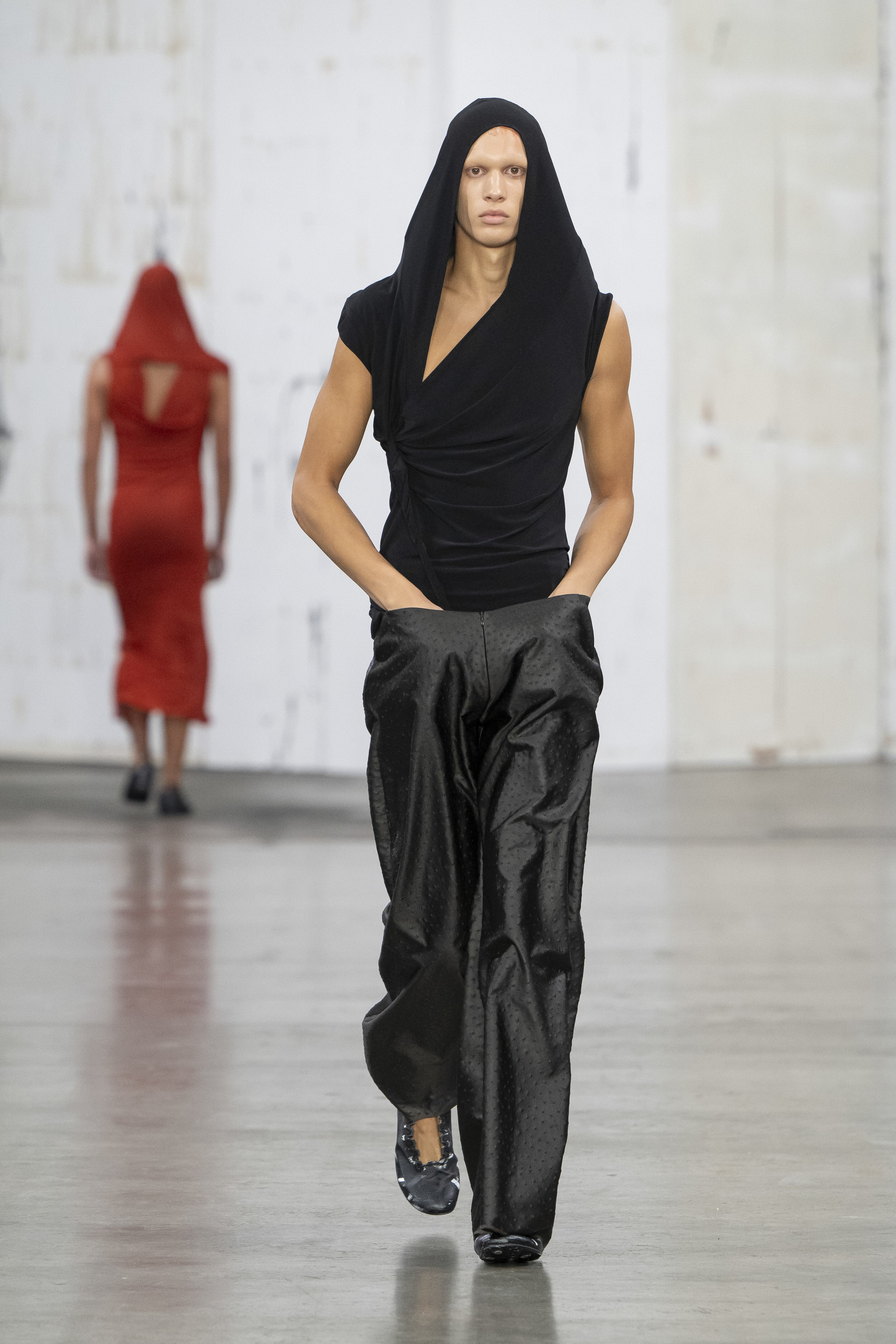
Nuba
S.S. Daley
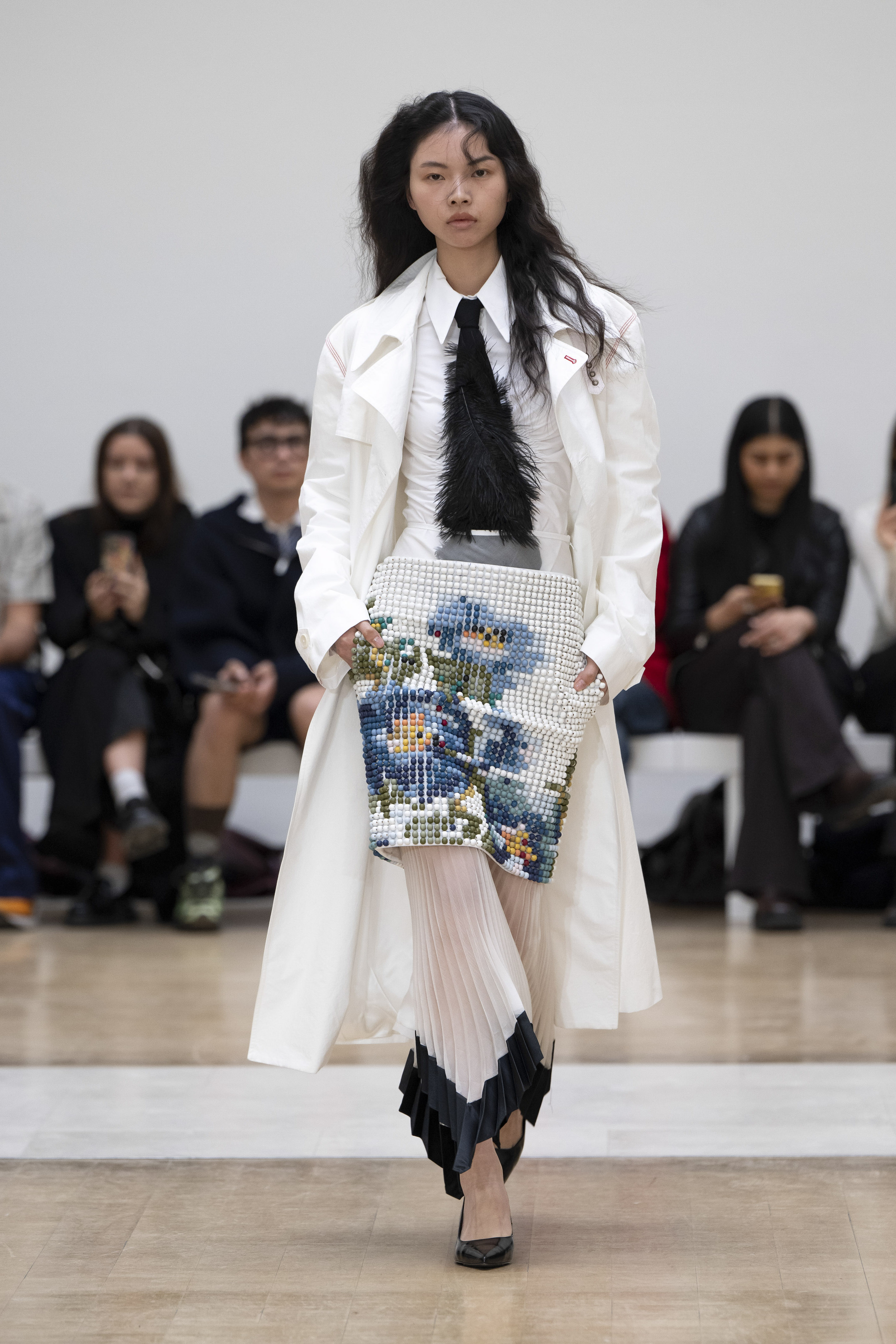
The not-so-surprise guest for S.S. Daley’s first dedicated womenswear outing, shown in an upper gallery of Royal Academy of Arts on Friday afternoon, was the popstar Harry Styles, who was also the runway show’s final arrival. Not so surprising because Styles, a longtime wearer of Steven Stokey-Daley’s eponymous label, invested in the business earlier this year. Taking his seat next to Anna Wintour (who wore a red, white and blue Kamala Harris scarf for the occasion), he was no doubt satisfied with his business decision – this was arguably Daley’s most refined collection yet. Because, while the designer’s fascinations with the traditions and idiosyncrasies of the English class system – often hovering around the Bloomsbury era and its protagonists – have occasionally veered into the realm of costume, here was a considered, real-world offering for a woman’s wardrobe, with just enough of his more outré flourishes to keep it interesting.
The inspiration point this season was the British artist Gluck, the carefully constructed identity of artist and painter Hannah Gluckstein, who rose to prominence in the 1920s and 1930s. A proponent for masculine dress who was openly queer, her subjects – like the florist Constance Spry, who inspired the colourful floral display at the end of the runway – were often the opposite, favouring the blousy, feminine codes of the era. It was a juxtaposition that Daley mined throughout the collection, shifting from masculine nipped-waist tailoring, worn with shorts or voluminous pants, to sinuous bias-cut dresses and beaded floral motifs. ‘Gluck used clothing to curate their identity, then observed the fashion of a lifetime of lovers,’ said Daley. ‘This collection is about the universe around Gluck, allowing us to go deep into the techniques of womenswear. As with our men’s collections, every piece matters, designed to create a full wardrobe.’
Stay tuned for more from London Fashion Week S/S 2025.
Jack Moss is the Fashion Features Editor at Wallpaper*, joining the team in 2022. Having previously been the digital features editor at AnOther and digital editor at 10 and 10 Men magazines, he has also contributed to titles including i-D, Dazed, 10 Magazine, Mr Porter’s The Journal and more, while also featuring in Dazed: 32 Years Confused: The Covers, published by Rizzoli. He is particularly interested in the moments when fashion intersects with other creative disciplines – notably art and design – as well as championing a new generation of international talent and reporting from international fashion weeks. Across his career, he has interviewed the fashion industry’s leading figures, including Rick Owens, Pieter Mulier, Jonathan Anderson, Grace Wales Bonner, Christian Lacroix, Kate Moss and Manolo Blahnik.
-
 Warp Records announces its first event in over a decade at the Barbican
Warp Records announces its first event in over a decade at the Barbican‘A Warp Happening,' landing 14 June, is guaranteed to be an epic day out
By Tianna Williams
-
 Cure your ‘beauty burnout’ with Kindred Black’s artisanal glassware
Cure your ‘beauty burnout’ with Kindred Black’s artisanal glasswareDoes a cure for ‘beauty burnout’ lie in bespoke design? The founders of Kindred Black think so. Here, they talk Wallpaper* through the brand’s latest made-to-order venture
By India Birgitta Jarvis
-
 The UK AIDS Memorial Quilt will be shown at Tate Modern
The UK AIDS Memorial Quilt will be shown at Tate ModernThe 42-panel quilt, which commemorates those affected by HIV and AIDS, will be displayed in Tate Modern’s Turbine Hall in June 2025
By Anna Solomon
-
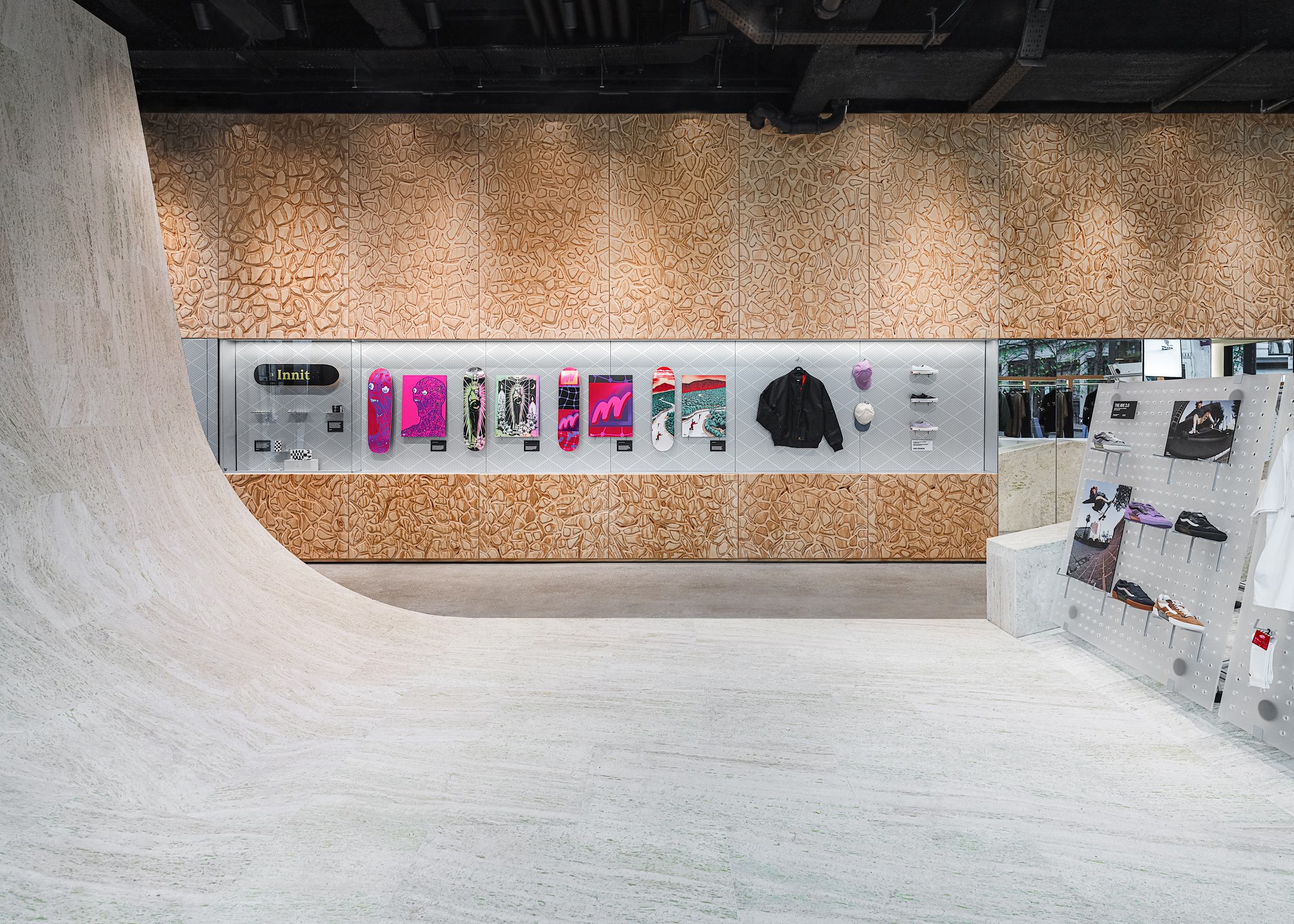 Vans’ West End store turns skatepark, with a 200 sq m travertine ramp
Vans’ West End store turns skatepark, with a 200 sq m travertine rampPart store, part community hub, Vans West End in London ramps up its skateboarding credentials with a design by Andrea Caputo Studio
By Simon Mills
-
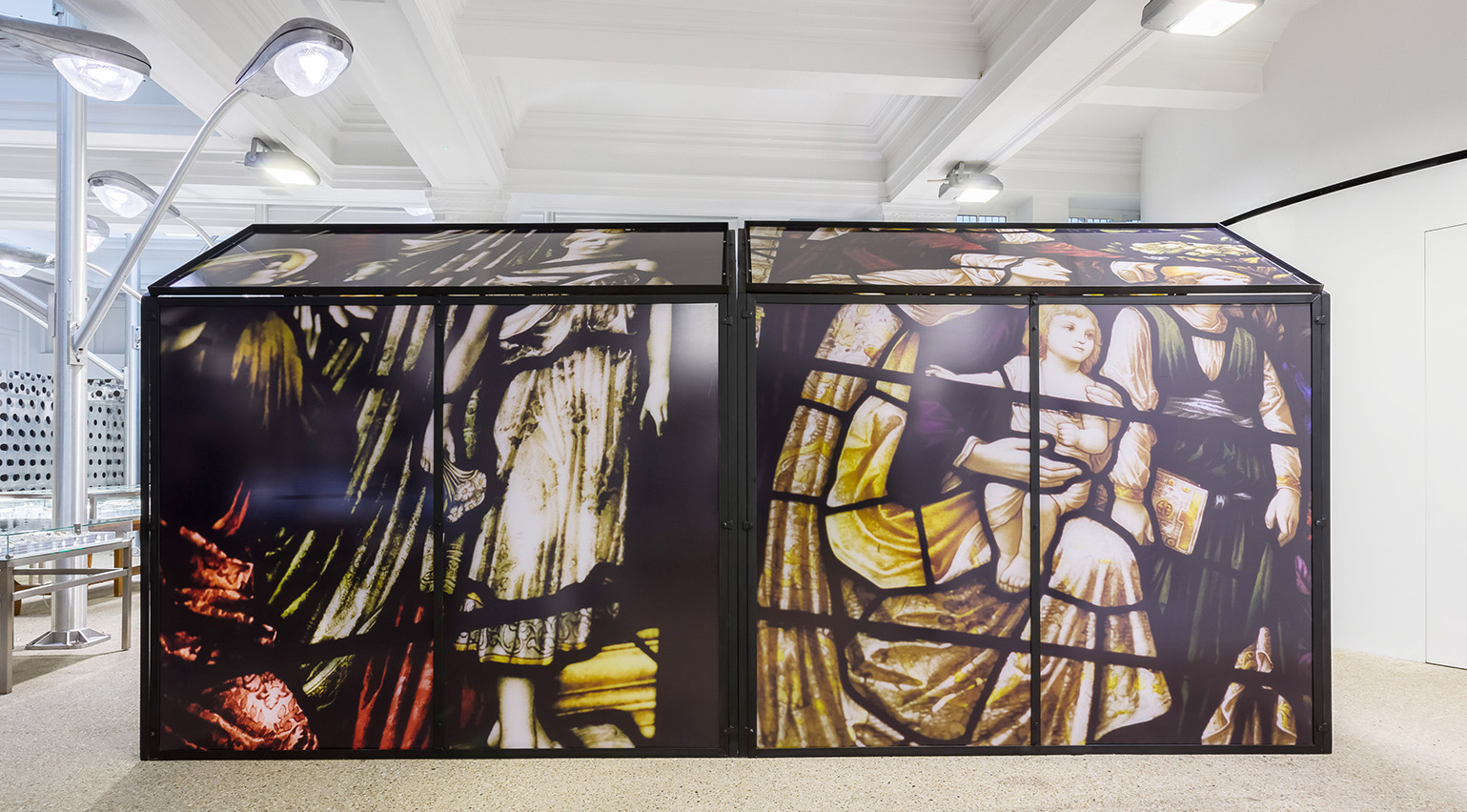 20 years of Dover Street Market’s transporting in-store installations, from giant elephants to soft toys
20 years of Dover Street Market’s transporting in-store installations, from giant elephants to soft toysAs Dover Street Market, Rei Kawakubo and Adrian Joffe’s radical London concept store, celebrates its 20th anniversary, we look back at ten of its most colourful installations, crafted alongside Simone Rocha, Jonathan Anderson, Martin Parr and more
By Orla Brennan
-
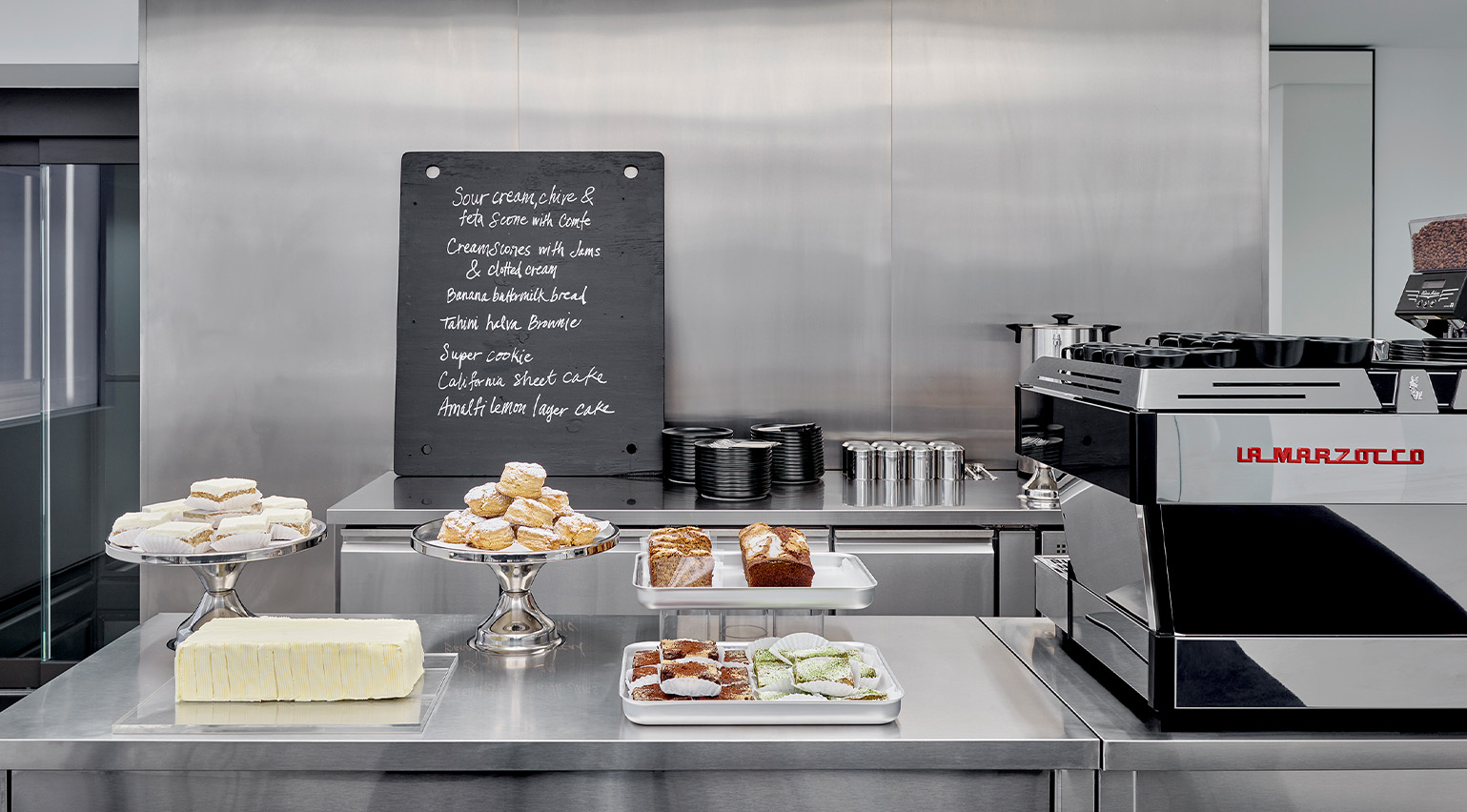 Alaïa’s secret new London café and bookstore is inspired by the art of hosting
Alaïa’s secret new London café and bookstore is inspired by the art of hostingHoused on the third floor of Alaïa’s London flagship, the intimate space – inspired by Azzedine Alaïa’s famed hospitality – includes a Violet Cakes bakery and a bookstore by Claire de Rouen
By Jack Moss
-
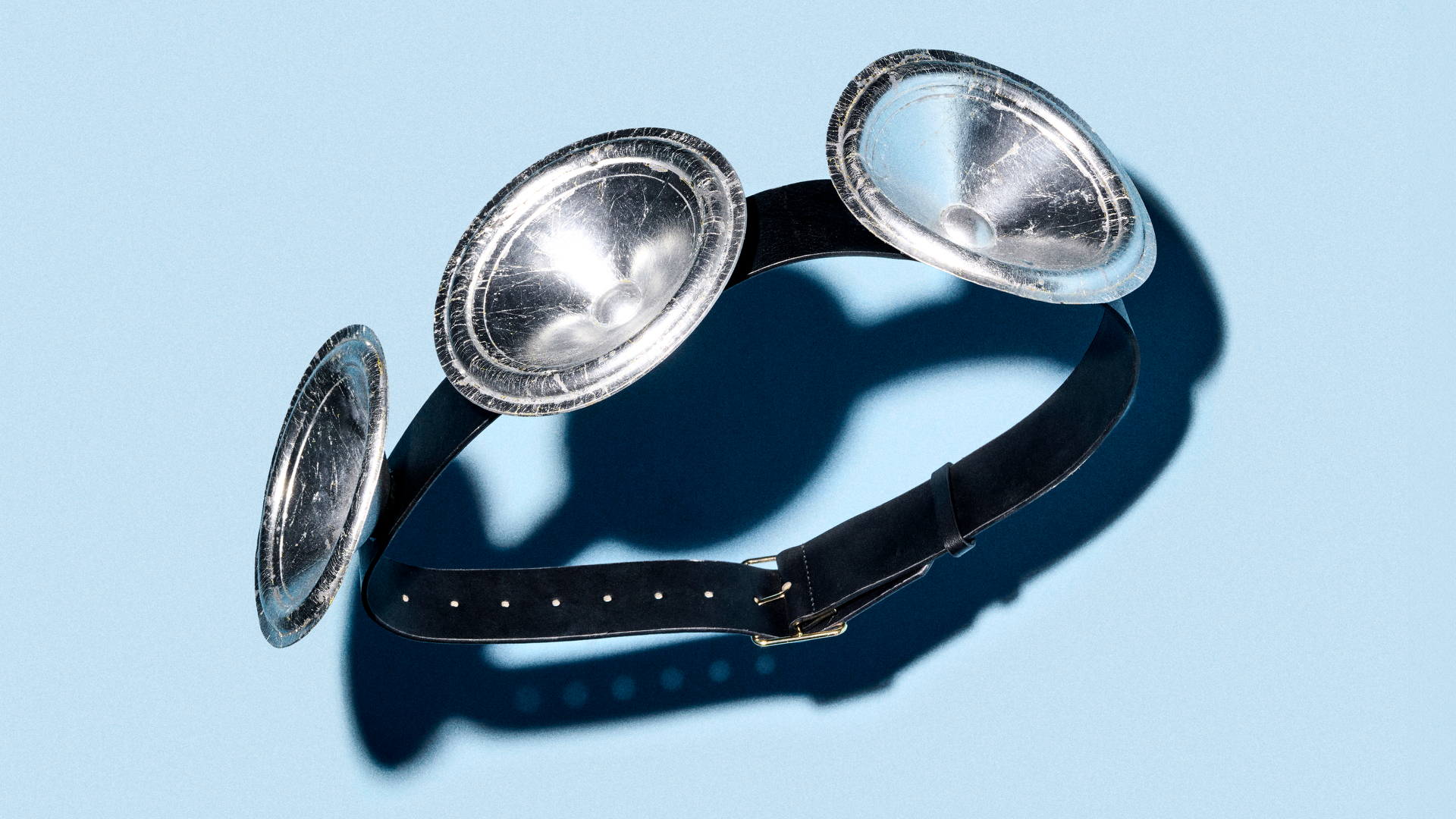 ‘Music is in the DNA of the brand’: AV Vattev on creating this year’s loudest accessory
‘Music is in the DNA of the brand’: AV Vattev on creating this year’s loudest accessoryRising London designer AV Vattev – who has recently outfitted Charli XCX and Troye Sivan for their viral ‘Sweat’ tour – talks about the influence of music on his ‘bold and unapologetic’ collections
By Jack Moss
-
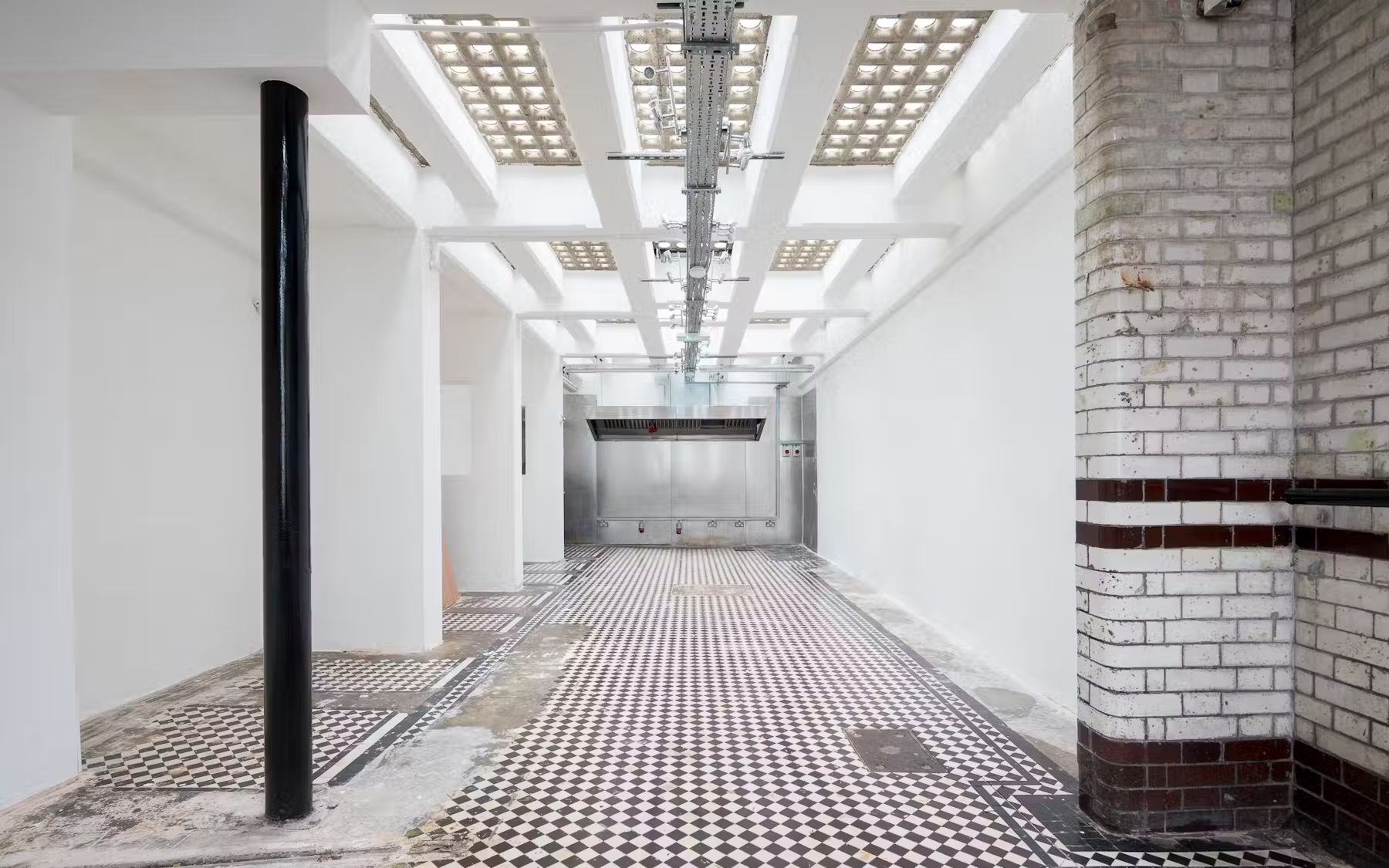 APOC’s secret London pop-up is a curiosity shop of weird and wonderful fashion
APOC’s secret London pop-up is a curiosity shop of weird and wonderful fashionOffbeat fashion emporium APOC’s London pop-up opens in time for the holiday season, offering the work of more than 70 avant-garde designers – most of which you won’t find elsewhere – in a secret location
By Mary Cleary
-
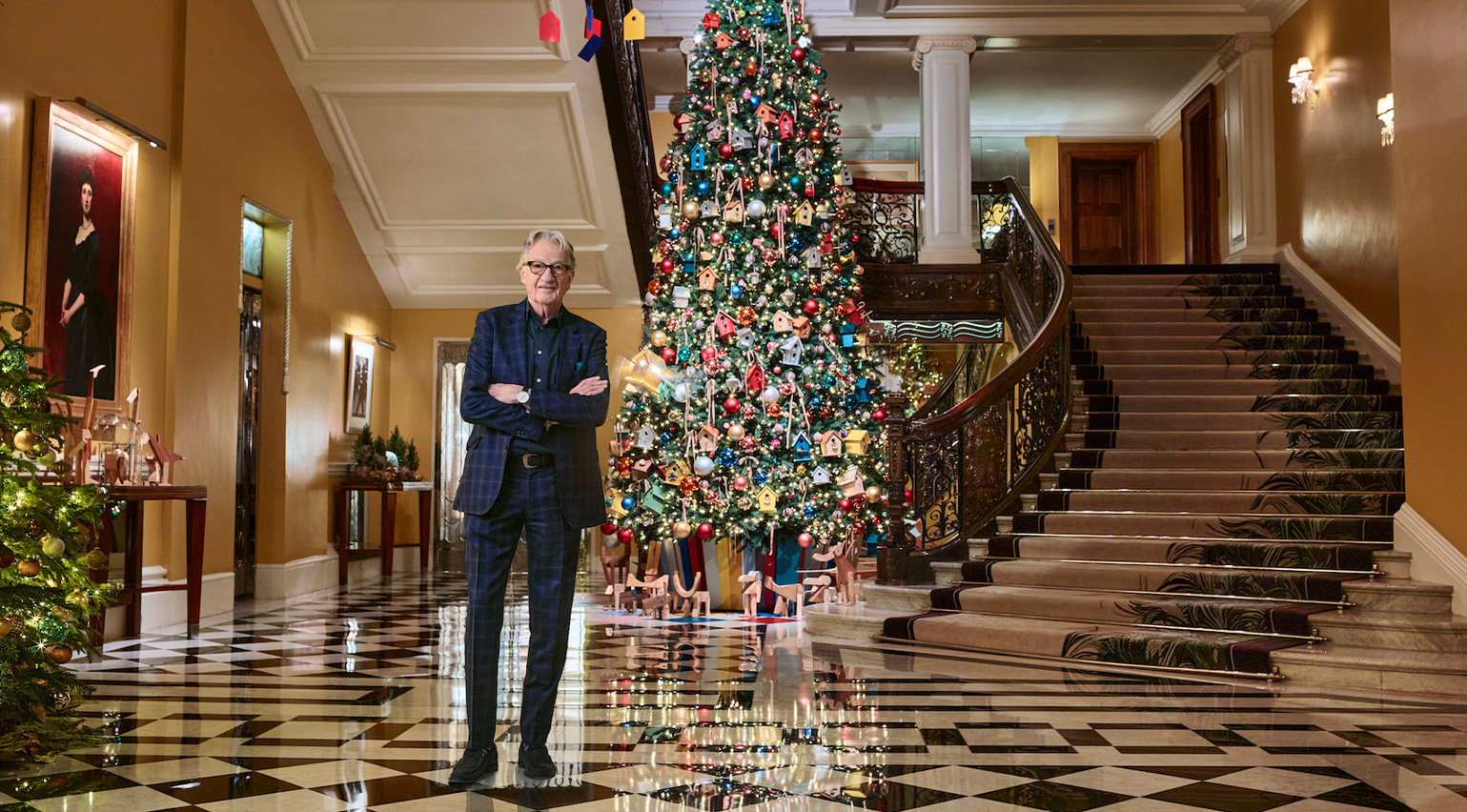 Paul Smith’s Claridge’s Christmas tree is a playful slice of ‘countryside in the centre of London’
Paul Smith’s Claridge’s Christmas tree is a playful slice of ‘countryside in the centre of London’Sir Paul Smith is the latest in a long line of fashion designers to curate the iconic Claridge’s Christmas tree. Here, he talks to Wallpaper* about the inspiration behind the tree, which features bird boxes and wooden animals
By Jack Moss
-
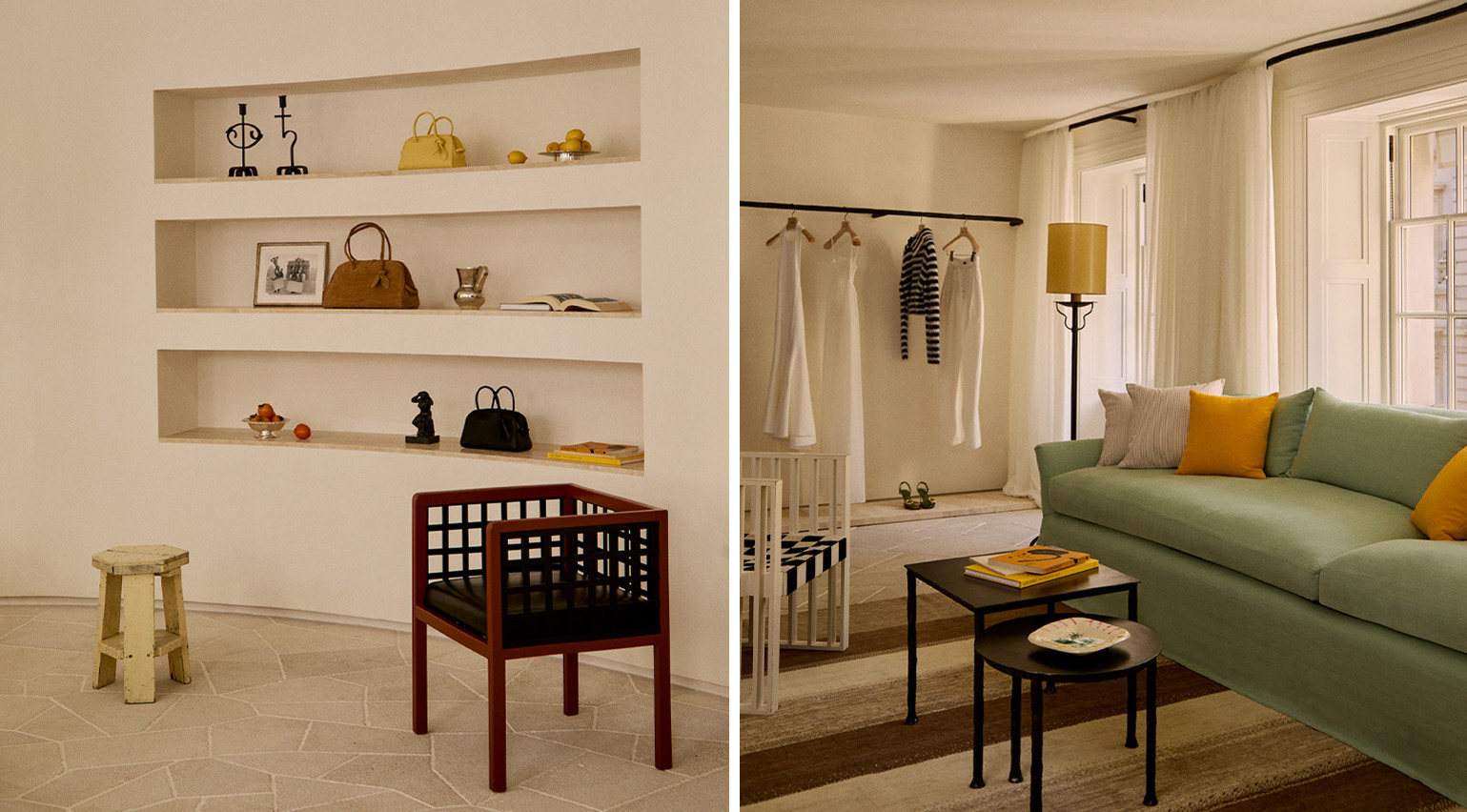 Tour Jacquemus’ new store, a serene Mediterranean escape in central London
Tour Jacquemus’ new store, a serene Mediterranean escape in central LondonSimon Porte Jacquemus has united with OMA on his latest store – a Meditteranean-inspired bolthole on London’s New Bond Street. Here, they talk Wallpaper* through the transporting space
By Jack Moss
-
 The making of Loro Piana’s magical festive Harrods takeover, ‘The Workshop of Wonders’
The making of Loro Piana’s magical festive Harrods takeover, ‘The Workshop of Wonders’Celebrating 100 years of Loro Piana, the Italian house has taken over Harrods in time for the festive season, spanning 36 transporting windows, two pop-ups and a raft of one-of-a-kind products which embrace the spirit of giving
By Jack Moss